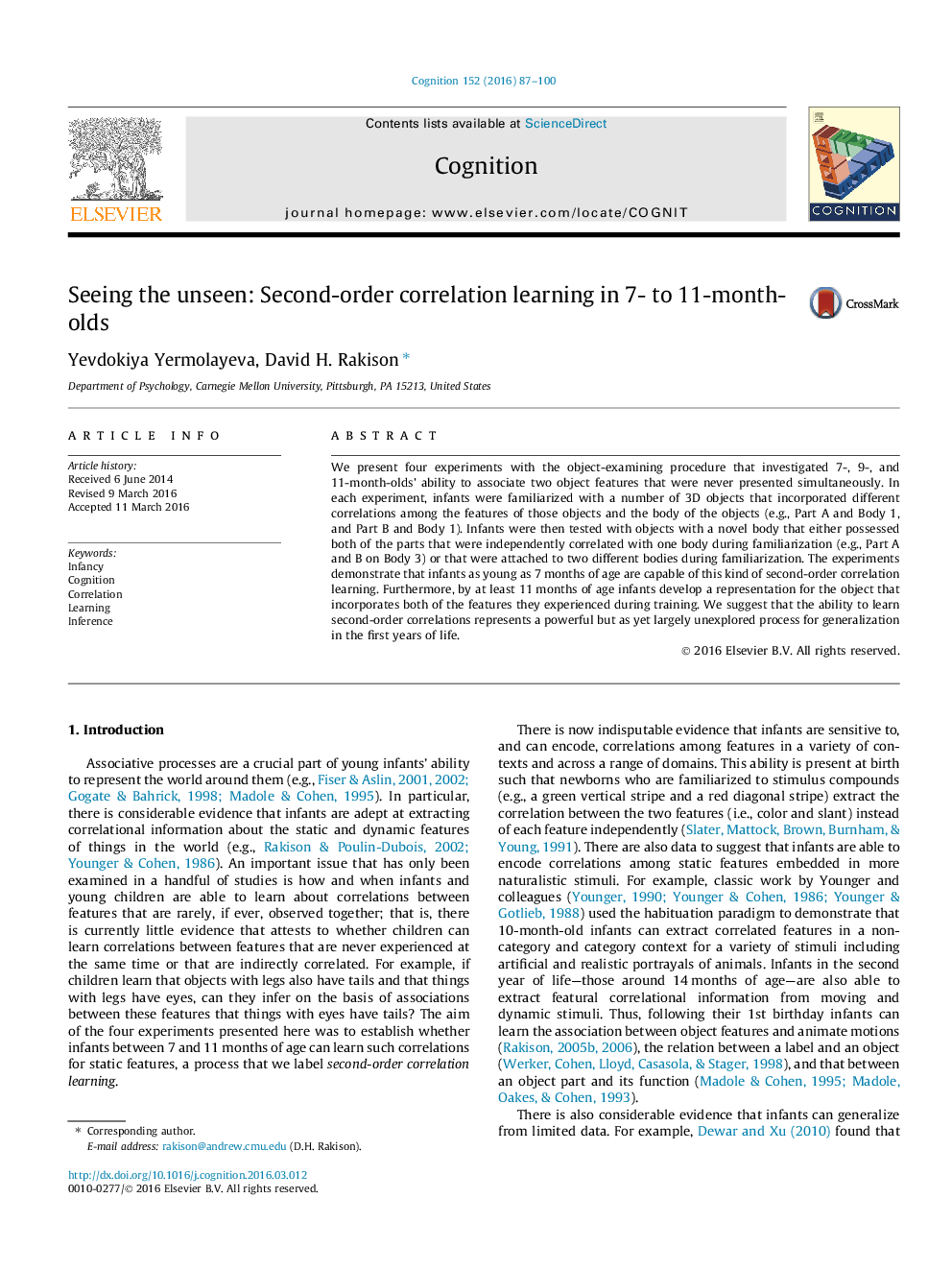| Article ID | Journal | Published Year | Pages | File Type |
|---|---|---|---|---|
| 7286160 | Cognition | 2016 | 14 Pages |
Abstract
We present four experiments with the object-examining procedure that investigated 7-, 9-, and 11-month-olds' ability to associate two object features that were never presented simultaneously. In each experiment, infants were familiarized with a number of 3D objects that incorporated different correlations among the features of those objects and the body of the objects (e.g., Part A and Body 1, and Part B and Body 1). Infants were then tested with objects with a novel body that either possessed both of the parts that were independently correlated with one body during familiarization (e.g., Part A and B on Body 3) or that were attached to two different bodies during familiarization. The experiments demonstrate that infants as young as 7Â months of age are capable of this kind of second-order correlation learning. Furthermore, by at least 11Â months of age infants develop a representation for the object that incorporates both of the features they experienced during training. We suggest that the ability to learn second-order correlations represents a powerful but as yet largely unexplored process for generalization in the first years of life.
Related Topics
Life Sciences
Neuroscience
Cognitive Neuroscience
Authors
Yevdokiya Yermolayeva, David H. Rakison,
